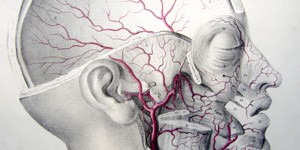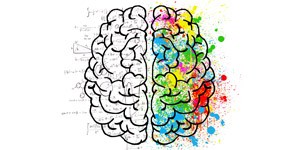By Mariano Garcia de Palau

Born in Barcelona, 17 February 1956. Graduated in medicine and surgery from the University of Barcelona in 1979. For 38 years has worked as an emergency physician in the area of occupational medicine. He became interested in cannabis by chance, and for the last 15 years has studied its therapeutic uses.
Currently he continues to advise on cannabinoid treatments and performs clinical work with patients, collaborates with various organizations and associations, serves as Senior Consultant for Grupo Curativa Colombia and is a spokesperson for the Spanish Medical Cannabis Observatory.
Cannabinoids are low-toxicity molecules and are therefore safe to use when handled properly from a therapeutic perspective. When using them for medicinal purposes, therefore, we give patients advice on how to ensure that they have no unwanted or side effects. We also make sure there are no possible contraindications and assess any possible interactions if patients are already taking prescription drugs. However, when cannabis is used for recreational purposes, it is also important to take account of a series of factors that may help minimise any risk.
There are no documented cases of death resulting as a direct cause of a cannabis overdose. This is proof of the low toxicity of cannabinoids in general. Nonetheless, anyone using cannabis should have information on possible side effects that might occur following consumption.
Such side effects will obviously depend on the dose and also on the frequency of use, type of cannabis and each individual's own biometric characteristics. Effects also vary depending on whether the subject is a sporadic or chronic user, the time of day, how recently they have eaten and the environment in which the drug is used. All of these factors can influence the final result, even if the dose and type of cannabis are identical. As we all know, chronic cannabis use generates tolerance, and the dose needs to increased every so often to have the same effect. This is the reason why chronic cannabis users have to increase their cannabis dose from time to time to get the same psychoactive effect. The speed with which tolerance builds up varies depending on the user's individual circumstances. We believe that THC generates tolerance. However, the clinical information currently available suggests that CBD does not.
Some chronic users may have certain health issues that have not properly studied, for a variety of reasons — symptoms that are difficult to assess, little impact on their everyday life, etc. Cannabinoids are safe to use, but there may be special circumstances creating risk factors that may advise against their use.
In particular, it is important to stress that cannabinoids –and especially CBD– can interact with other pharmaceuticals, slowing the process of metabolism in the liver, and, therefore leading to an increase in blood levels of these substances. How dangerous such an increase might be will depend on the toxicity of the pharmaceuticals in question. It is therefore necessary to examine any interactions with other drugs the user may be taking habitually. We do not know exactly at what dose CBD begins to impair metabolism of other pharmaceuticals, as few studies have been conducted on the subject. However, with the information currently available, we believe this interaction might occur with high doses of CBD. There are no documented cases of possibly life-threatening situations with concomitant use of cannabis and other pharmaceuticals.
When cannabis is used for recreational purposes, what is basically being consumed is THC. The actual quantity varies depending on the specific variety. In particular, we should mention the extracts currently available on the black market and certain associations that distribute –and in some cases prepare– them. These extracts often have a very high percentage of THC, meaning that just one "pipe" represents a very considerable dose and may in some cases be enough to lead to THC intoxication, with the appearance of the side effects we shall discuss below.
Use of THC leads to an increase in cardiac output, tachycardia and heightened blood pressure, which later reverts to normal. Special care should therefore be taken when patients have a heart condition. Heart rate may increase by between 20 and 100% for half an hour to 3 hours, depending on the dose, evidently. Could a patient with a heart condition face a major problem from consuming THC? It all depends on the type and seriousness of the heart condition, as well as the dose and frequency of use. When a patient has a heart condition, they should generally not be exposed to factors that might cause tachycardia, increased cardiac output or acute hypertension. Some studies relate cannabis use to a greater propensity to myocardiopathy. We could say that it reduces the threshold for myocardiopathy in patients with a prior condition.
Low or moderate doses will probably increase the activity of the sympathetic nervous system and reduce parasympathetic activity, causing tachycardia and an increase in cardiac output.
High doses inhibit sympathetic action and directly activate the parasympathetic nervous system, causing bradycardia and hypotension, which would not cause as much cardiac stress.
However, there must be an underlying ischaemic heart condition. THC can also cause orthostatic (or postural) hypotension. This is triggered by sudden or fast changes in posture, when getting up from a crouching or reclining position. It passes after a few seconds, but care nonetheless needs to be taken. It should be noted that CBD is the cannabinoid that causes the longest lasting hypotension. Cannabis users who use CBD-rich varieties should take especial care, particularly if they have low blood pressure.
They also inhibit the secretion of gastric juice and gastric evacuation is slower. These are their effects on the digestive system. Chronic users may suffer constipation, or a tendency to it, as a result of the spasmolytic effect, especially when CBD-rich varieties are taken.
In terms of the central nervous system, the most important impact is the psychoactive effect, which is generally unwanted amongst therapeutic users. It is possible to build up tolerance by starting with very low doses and gradually increased levels of THC. You may want to describe alterations in short-term memory (e.g. the person gets up to fetch something and along the way forgets what they were looking for), which are accentuated with high doses of THC. However, this effect is reversible once consumption or therapeutic use is terminated. You should always insist that the appearance of side effects depends on the frequency of administration or consumption and essentially on the dose, especially in the case of THC. Any problems that may arise with cannabinoid use are nearly always related to the use of THC. However, such problems or side effects can be kept under control through rational consumption and provided any health issues that might advise against consumption have been ruled out.
Cannabis acts on the areas that regulate motor activity. There is a high density of CB1 receptors in the cerebellum, which essentially regulates motor coordination and balance. Acute THC intoxication causes motor discoordination and alterations in balance, which are entirely reversible.
Learning tasks can also be affected, as can the subject's capacity to concentrate on certain activities. Here again, there is a direct relationship with the dose taken and the composition of the product. Writing, driving and operating machinery may all be affected, depending on the user's tolerance, usage experience and length of treatment. In some cases, spatial orientation may also be affected. High doses of THC often affect balance too, and there may be difficulty performing tasks that require motor coordination or walking.
High THC doses cause an alteration in motility, with a tendency to hypotonia and hypomotility, with a relaxing, sleep-inducing effect. Cannabis use can be followed by anxiety or panic attacks, especially among sporadic users with little experience in its use. Some chronic users may also suffer anxiety-depressive disorders, almost invariably after an unbroken period of several years of high-level consumption.
It is always necessary to monitor the dose and the type of cannabis to be used
Also after certain doses —generally considered medium or high— THC can be a very effective sleep inducer. As we all know, after a large consumption of THC, we tend to fall asleep.
It is worth noting that CBD-rich varieties or those with THC/CBD ratios of around 1/1 have a lesser psychoactive effect; the hit is different and not as strong. These more balanced varieties are highly recommended for patients initiating cannabis use.
Another situation which should be discussed is polydrug consumption. Many cannabis users also take other substances - frequently alcohol, but the range of other substances is broad.
The use of different psychoactive substances can have unwanted effects and can cause interactions that can make recreational use less rewarding and even prove very unpleasant.
Cannabis + Stimulants (cocaine, amphetamines, MDMA)
This mixture can result in increased blood pressure, tachycardia and possible cardiotoxicity. THC heightens the subjective effects of cocaine and amphetamines.
Cannabis + Hallucinogenic Substances (LSD, psilocybin, etc)
Combination with cannabis can augment the effects of hallucinogens. This combination could result in a very intense experience that might prove unpleasant.
Cannabis + Depressants (alcohol, benzodiazepines, gamma-hydroxybutyrate (GHB) and ketamine)
This combination can increase the possibility of suffering drowsiness, collapse and vomiting, since it increases sedation of the central nervous system. It also increases the subjective and cardiovascular effects of cannabis and reduces psychomotor performance.
Cannabis can be used quite safely, but it is important to consider the factors that may influence the outcome
It should be consumed reasonably, minimising the risk factors for each user. We advise against using different substances at the same time, since this may have unwanted effects. I think the best option is to try to ensure that the use of drugs causes the least possible harm to our health. We therefore need reliable information on the substances in question. Above all we need to be sure that the product is not adulterated or contaminated.
When cannabis is used for recreational purposes, it is important to remember that, with specific exceptions, what is being consumed is essentially THC. Specific exceptions involve recreational use of CBD-rich varieties. However, this is not common among recreational users.
The very purpose of recreational use is the consciousness altering effects offered by THC. In CBD-rich varieties, the 'hit' or psychoactive effect of THC is reduced, since the CBD minimises and reduces the psychoactive effect. For this reason, combined use of THC and CBD is of particular interest for medicinal purposes. However, recreational users seldom consume CBD-rich varieties.
Anyone who is going to consume cannabis must consider any prior pathologies that might complicate use through the appearance of side effects. Patients with heart conditions should take care with THC doses, which initially cause tachycardia, increased cardiac output and hypertension.
As already discussed, the use of high doses of THC could be dangerous for users with heart conditions. The risk depends on the type and seriousness of the heart condition, and the user's experience with cannabis use. Users who have built up a tolerance through continued cannabis use have a better tolerance to the effects directly related to THC, which are not as intense as with initial cannabis users.
It is important always to consider the variety that is going to be consumed and, above all, the dose of cannabinoids it contains. It is especially difficult to gain specific information on cannabinoid percentages for the varieties currently on the market. There are many different variants and very few have been analysed to determine their potency. Evidently, the greater the THC percentage, the greater the plant's potency. Depending on the user, they may have side effects which may prove more or less limiting. There are at present some very powerful varieties, with THC percentages of over 15% and in some cases as high as 25%.
The immediate conclusion is that the greater the percentage of THC in a variety, the more THC there is per gram of grass. It is essential to monitor the dose and not always administer the same dose, given that the quantity of cannabinoids varies depending on the percentage of each variety.
There are many factors that can influence the final outcome of consumption.
The effect varies depending on whether or not the subject has eaten beforehand, the time of day, the ambient temperature, the type of cannabis, the environment in which the cannabis is taken, etc.
People initiating cannabis use should be very aware of all these considerations. Above all, they should start with a low dose, and leave time between doses to assess their general state and control over the situation, especially with regard to the psychoactive effect. In such cases, I would recommend using CBD-rich varieties, and that they should contain different ratios of THC. For a person who does not use cannabis habitually, starting with these varieties can be much more helpful, since the negative effects of THC are reduced. However, even if they consume a variety with a THC/CBD ratio of 1/1, in a non-habitual user, any psychoactive effect will be much more controllable, and there will be no possibility of anxiety or tachycardia.
Consume slowly and at low doses, leaving time between one dose and the next to assess your state at all times and keep the situation under control.
In the event of acute intoxication, the user may have a panic attack, fainting or in some cases hypotension. In such cases, it is very important to lie the patient out and raise their legs to help recover normal blood pressure. They usually recover in a question of minutes.
If a user suffers an uncontrolled psychoactive effect, it is important to calm them down and place them in a quiet environment. In the event of vomiting, the subject's posture should be checked to prevent them choking on the vomit. They should be placed at least in the recovery position (lateral recumbent), lying on their side, or in a position in which they can vomit more easily. Choking on vomit tends to occur when people are unconscious.
We advise against using different drugs at the same time. Polydrug consumption can have unwanted effects, given that there are some substances that potentiate cannabis and vice versa. It is important to take care when mixing different substances, since in many cases the result is more difficult to predict and tolerance levels to different substances may vary when they are used in combination.
It is helpful to have information on the type of variety to be consumed; we all know that the effects vary between Indica and Sativa varieties and even Sativa/Indica hybrids.
Because of the combination of cannabinoids and terpenes they contain, Sativa varieties have a more cerebral, less corporeal, effect, which can be euphoriant and invigorating. This is in contrast to the majority of Indicas, which have a more corporeal, relaxing, and even sleep-inducing effect that does not tend to foster physical activity, with a more hypnotic psychoactive effect.
We therefore advise users to make sure there they have no existing heart condition, and to consume in low doses, to decide which variety is most suitable for their needs, depending on the potency.
Image: "Relax by my side" by Cxelf is licensed under CC BY 2.0


